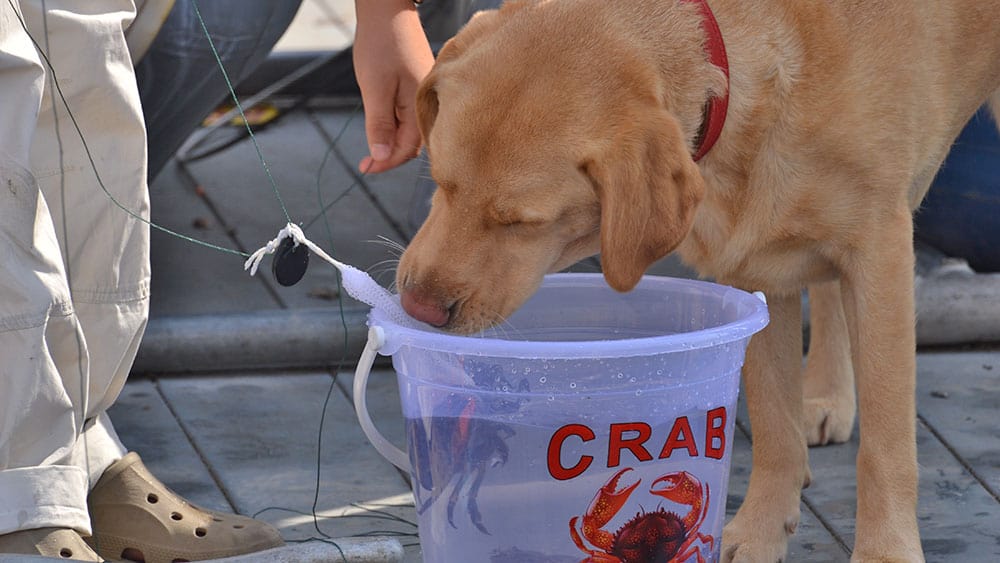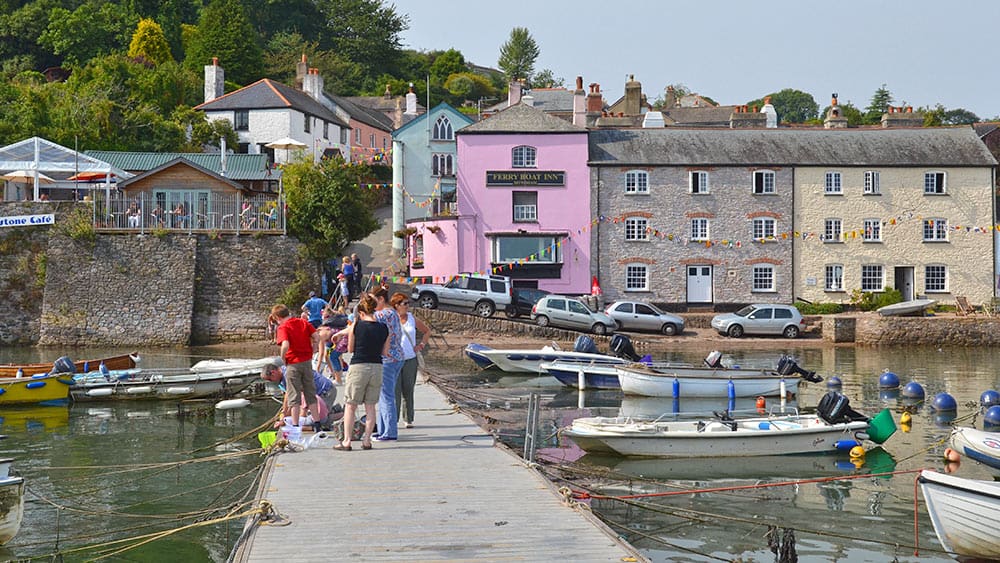Where To Go Crabbing in South Devon
How to Nab a Crab
Sideling along the shorelines and estuary beds in search of a tasty morsel, the humble crab remains one of the coast’s most abundant dwellers. Spending a sunny afternoon trying to catch these nomadic nippers can provide hours of fun for the whole family. All you need are your crab lines, bait and buckets, nets, a sparkling quayside, and of course, plenty of curious crustaceans keen for a nab.
Mr Toad has put together a little guide to help you have a safe and clawsome crabbing experience…

What equipment will we need?
A no-hook crab line is recommended, particularly for kids. This will include a long line, bait bag and sinking weight at a cost of somewhere around £5. You’ll also need a bucket, which should be filled with sea water and used to stow your haul, plus fishing or butterfly nets to transfer the crabs into the bucket.
*Top Tip* Add some pebbles and seaweed to your bucket to help make your crabs feel more at home.
What bait do you use to catch crabs?
Crabs have an incredible sense of smell – detecting odours via antennae that twitch and flick to create currents through tiny hairs – and are irresistibly drawn to ‘stinky’ bait. Most seasoned crabbers swear by a sliver of streaky bacon, but a pongy sardine or sludgy mackerel head are also said to work wonders. You could always pop into your local fish mongers and see what’s going in the way of scraps.
Where can we crab?
The best places to crab are harboursides, quays, pontoons and slipways, but make sure crab lines are permitted by looking for signs or asking the harbour master…that way, you won’t upset any of the local sailors and fishermen. Always be wary of quayside edges and remain extra vigilant around toddlers who ideally should wear life jackets or float vests, just in case. Children should always be accompanied by a responsible adult. Crabbing is great fun, but please respect the water.
Best crabbing spots in South Devon
In the harbourside town of Kingsbridge you can crab along the promenade and off the ferryboat steps and slipways. During the town’s annual summertime fair week celebrations there’s a crab catching competition staged at the Crab Shell Inn on Embankment Road.
Victoria Quay in the sunny seaside town of Salcombe is a popular place for crabbers to dangle their lines, while Dartmouth’s historic embankment and Dittisham‘s pretty pontoon are also lovely spots to try and nab one of the local crustaceans.

*Top Tip* Crabs tend to hide in the mud on the ebbing tide, so many crabbers reckon the best time to crab is on the incoming and slack tides. It’s also reckoned that crabs are more active during spring tides.
*Not to be Missed* Salcombe Crab Festival is a popular, annual event offering a packed schedule of cooking demonstrations, food stalls and live entertainment – a must for all foodies!
How do we know if we’ve nabbed a crab?
Good question. Once you’ve baited and submerged your crabbing net, allow it to meander along the seabed where it will hopefully start attracting the attention of the local shore crabs (Carcinus maenas), which can range in size from teeny-tiny nippers the size of your thumbnail to tougher nuts the size of your clenched fist… be wary around the larger crabs as their impressive claws are more than capable of delivering a cheeky pinch.
When the crabs begin to start nabbing your bait, you’ll feel a slight tension or gentle tugging on your crab line. Carefully draw your net to the surface water and see if any crabs have hitched a ride with their pincers. If you’ve managed to catch some, steadily land your haul and use your catching net to ferry them into your bucket. It’s not uncommon for one or two to release their grip and plop back into the sea, so don’t be disheartened if this happens, it’s all part of the fun.
*Top Tip* There’s no need to handle the crabs, but should you have to, be very gentle with them and use a well-placed thumb and finger positioned behind either of its pincers while maintaining a steady grip.
How to release your crabs
The exciting grand finale to any crabbing excursion is releasing your captured sidewinders back into the big blue. The best way to release your crabs is to gently drain your bucket onto a slipway close to the waters edge and watch them scurry back into the water.
Did you know?
- Worldwide, there are more than four thousand species of crab.
- Crabs were sideling around seabeds during the Jurassic period, 200 million years ago!
- The world’s smallest crab is known as the Pea Crab and spans less than half an inch.
- The largest crab in the world is the mighty Japanese Spider Crab which can measure up and beyond of three metres between pincer tips.
- Most crabs have a life span of between three and four years.
We hope you’ve found Mr Toad’s crabbing guide useful and we wish you all plenty of safe and sunny nabbing.
